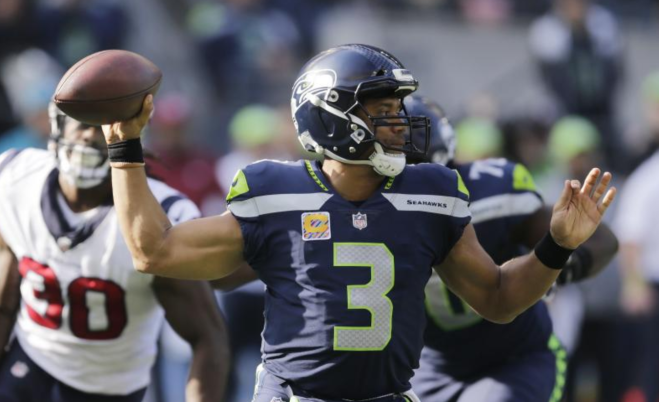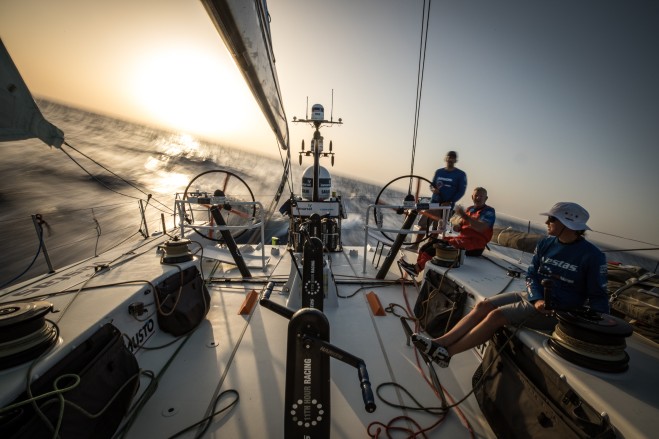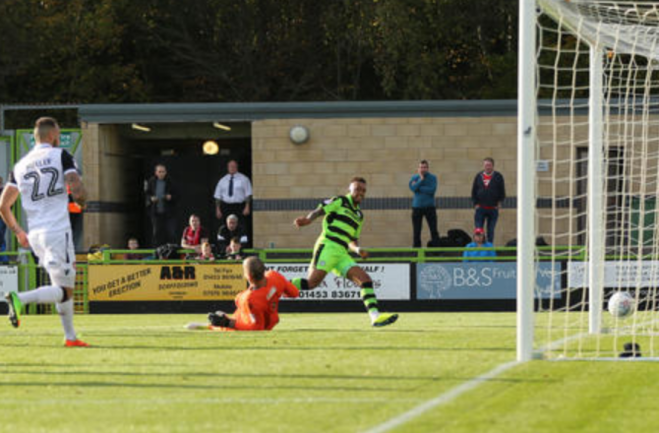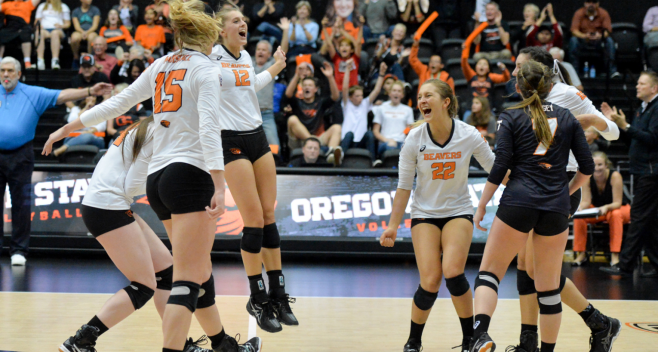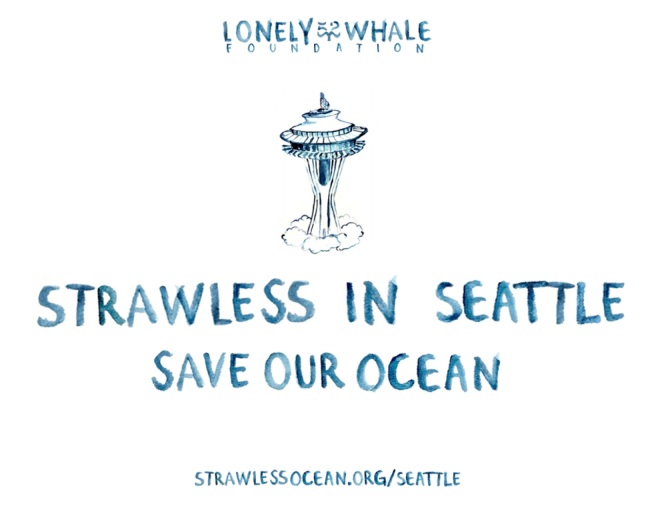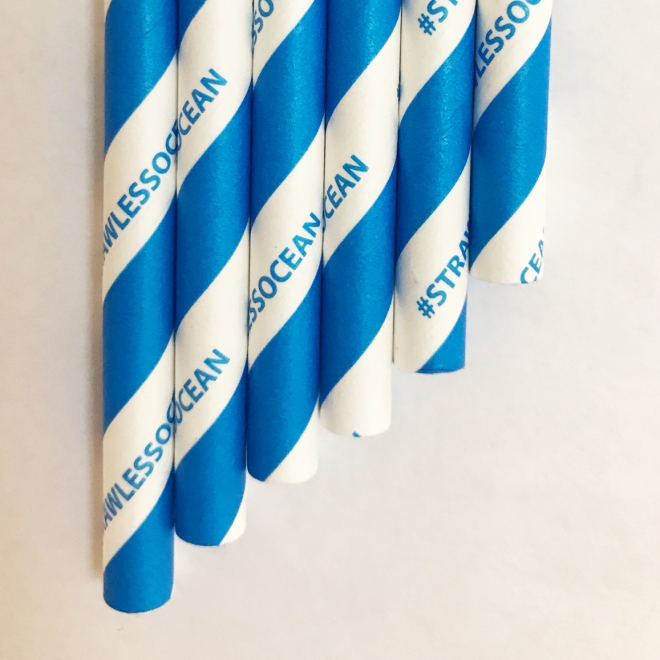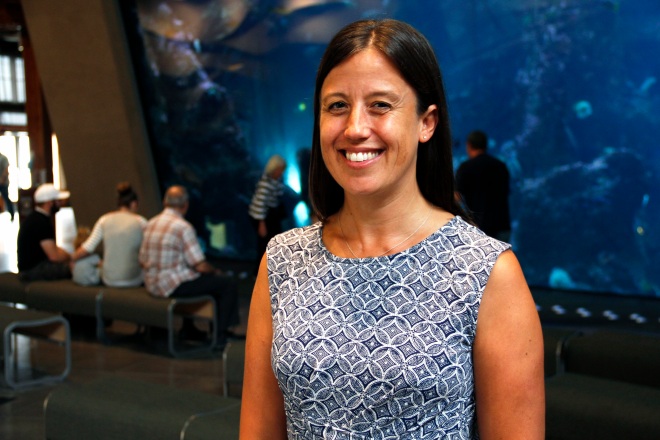The Green-Sports movement is in a transitional phase from its initial 1.0 version — the greening of the games themselves — to its 2.0 incarnation — engaging fans on environmental and climate issues.
The Green Sports Alliance, now eight years old, is also in the midst of change, as it searches for a new executive director to lead the organization firmly into the Green-Sports 2.0 era. That the Alliance is the most established Green-Sports trade association in the world may be taken for granted by many. But for those who were present at its birth, the odds of the GSA reaching its eighth birthday was by no means a certainty back in 2011. An organization dedicated to the Greening of Sports? What did that even mean?
With that in mind, we spoke with Jason Twill, one of the GSA’s Founding Directors and co-author of its bylaws. This long-form interview gets the inside story of how the Alliance came to be, the fascinating route Twill took to be — as Lin Manuel Miranda famously said in Hamilton — in the “Room Where it Happened,” and how the Alliance and other similar organizations around the world can help build a Green-Sports 2.0 world.
GreenSportsBlog: Jason, the story of how the Green Sports Alliance came to be is something I’ve been interested in for some time, so thank you for talking with us. Tell us about your background and how you came to be involved with the Green-Sports movement in its embryonic stages.
Jason Twill: Thanks, Lew. It has been quite a circuitous route. Toward the end of high school in Warren, NJ, a New York City suburb, I tended bar in Hoboken, which was a quick train ride away from Greenwich Village. I have this memory of emerging from the depth of the underground like I had crossed some imaginary threshold into this world of excitement — streets buzzing with energy, layered with a diversity of people and cultures that make The Village great and the antithesis of suburbia, which I hated. That’s when my passion to create better cities and communities began, and I have never looked back.
GSB: What came next?

Jason Twill (Photo credit: Jennifer Twill)
Jason: I studied art and political economics at Colorado College; and I also had the privilege of studying in Florence, where the piazzas and labyrinthine grid was a very different sort of urban environment. I loved it! I then moved to New York and was interested in pursuing fashion design. Took a construction job to pay the bills while studying at the Fashion Institute of Technology and Parsons School of Design.
GSB: What happened to loving cities and urban architecture?
Jason: I told you it was a circuitous route! I got the fashion bug in Florence. So, back in New York, I spent my days on construction sites and evenings at fashion shows and working with designers. This confluence of construction and design is what ultimately led me back to a passion for architecture. It hit me like a ton of bricks when I was visiting the Getty Center museum in L.A. I found myself looking at the buildings and landscape as art and became set — finally — on becoming an architect.
I applied to Columbia for urban studies and architecture and, while waiting to start, took a summer job in 2001 with architecture firm Mancini Duffy. Their offices were in Tower 2 of the World Trade Center. I was in the building on the morning of 9/11. Escaped by just a hair, along with others from the firm, but I lost a lot of friends that day. So I postponed school and went back to the firm to help them rebuild their practice. I noticed several friends there suffering from post-traumatic stress. Having been through a lot of adversity in my life, I set up an informal 12-step-like program in which we all supported one another to get through the fear and anxiety we were experiencing.
At that time, my co-worker and future wife, Jennifer, gave me a book, “The Geography of Nowhere: The Rise and Decline of America’s Man-made Landscape,” by Jason Howard Kunstler, a fantastic, non-technical explanation of suburban sprawl in the post-World War II era. It made me reflect on my own experience growing up in the suburbs and how much the built environment shapes our social patterns and behaviors. I literally closed that book and knew what I wanted to do with the rest of my life: Disrupt the real estate sector through ecologically and socially conscious development models. So I pivoted from Columbia to getting a Masters in real estate development and finance at NYU.
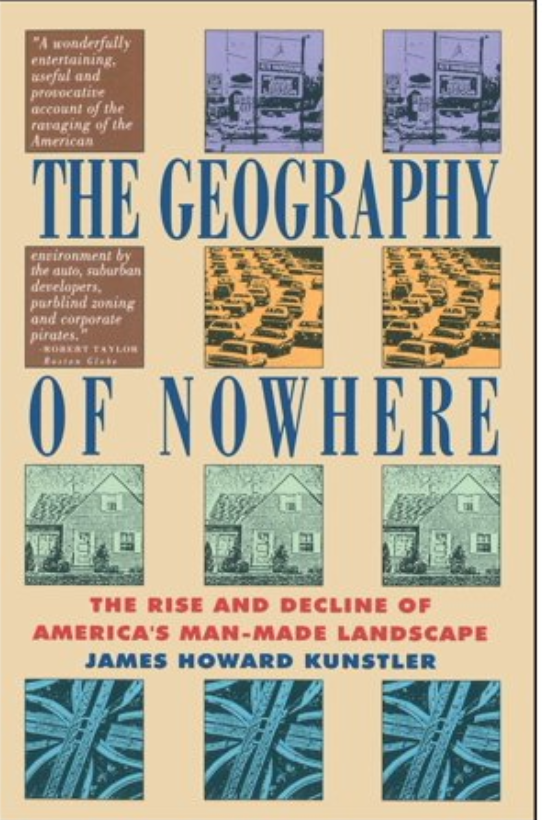
GSB: Did that even exist in the early 2000s?
Jason: Not really. I had to advocate for NYU to introduce things like LEED certification. But there were already a lot of great experts in this space I could learn from outside of school. I essentially earned two masters, with conventional real estate courses at NYU augmented by reading tons of books^ to teach myself these other pathways. Also volunteered to help get the US Green Building Council’s New York City chapter going, worked on some of the first LEED buildings in New York, and then I was fortunate enough to meet Jonathan Rose…
GSB: The legendary New York City real estate developer and sustainability champion…
Jason: Exactly. I wrote him a letter; he invited me to his office for coffee and a talk He’s been a friend, mentor and inspiration ever since. During that time, from 2003-2007, I worked for a couple of smaller private developers, championing sustainable and equitable design. The timing was right; by 2005, the market had shifted and I was getting more traction on things like LEED certification. We also had our first son, Sullivan. He had a series of illnesses and the first case of influenza A in the city in 2007, which scared the hell out of us as new parents. We thought this might have something to do with the post 9/11 air quality in New York, so we decided to move to another city. Austin, Portland, and Seattle were on our radar because of their progressive governance and industry stars.
GSB: Where did you end up?
Jason: We chose Seattle, the epicenter of the green building movement. I was very fortunate to receive an offer from Vulcan Inc. and we relocated in 2007.
GSB: Vulcan Inc. is the business and philanthropic entity founded by Microsoft co-founder, the late Paul G. Allen.
Jason: Yes! The six years I spent at Vulcan were some of the most productive of my career. I became a practitioner of city-making as a senior project manager working on all aspects of Paul Allen’s portfolio. We looked to inspire change in areas he was most passionate about: art, science, music, technology, and sports. I supported Vulcan Real Estate on the delivery of a new community called South Lake Union, an industrial area filled with old warehouses just north of the city’s central business district.
GSB: What did it become?
Jason: Paul originally purchased the land and gifted it to the city so they could create a park. But citizens voted down a tax measure to fund construction and the city handed back the land. Paul pivoted and turned it into a mixed-use, sustainable community. Over time, it emerged as one of the first Innovation Districts in North America, now home to Amazon’s HQ1, Facebook, Google, and Microsoft. At the same time I was working on South Lake Union, I started incubating what would become the Green Sports Alliance. When the financial markets crashed in 2008, things slowed down at Vulcan. My boss, Ray Colliver, got approval from Paul to apportion more of my time to embed sustainability even deeper across Vulcan’s business portfolio. Our office was across the street from CenturyLink Field, home of the NFL’s Seahawks, one of the teams Paul owned…
GSB: …The others being CenturyLink tenants — MLS’ Seattle Sounders — in which Mr. Allen’s estate has an ownership stake, and the NBA’s Portland Trail Blazers.
Jason: Ray introduced me to Darryl Benge and Mike McFaul, who ran CenturyLink operations. They were already looking to invest in sustainability measures, so I started to support them in getting some runs on the green scoreboard.
GSB: What kind of things did you help them do?
Jason: We planned and implemented a comprehensive resource conservation plan that included the installation of nearly a megawatt of solar panels on the roof of the adjacent WaMu Theater, EV charging, LED lighting retrofit, waterless urinals, waste strategies, and more. We also started to explore how we could generate fan awareness and impact behavior through strategic branding and messaging. And then this larger dialogue started to occur around green sports.
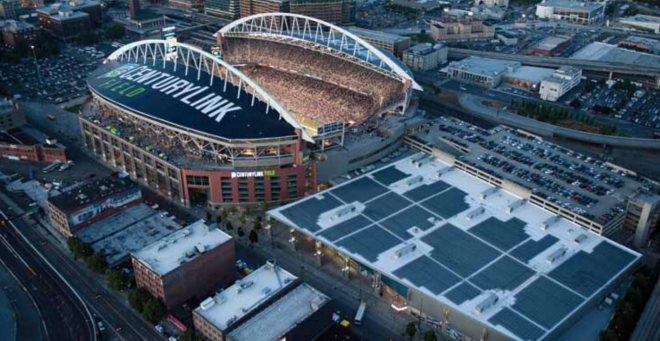
A solar array tops the roof of the WaMu Theater adjacent to CenturyLink Field, home of Seattle’s Seahawks Sounders (Photo credit: Seattle Seahawks)
GSB: How so?
Jason: In 2009, I met Justin Zeulner, who worked for the Trail Blazers. He was doing terrific green stuff there, including getting Moda Center certified as one of the first LEED Gold arenas in the world. I was also introduced to some folks at the WNBA’s Seattle Storm…
GSB: …the current WNBA champs!
Jason: …and the NHL’s Vancouver Canucks, and became mates with green-sports pioneer Scott Jenkins, who was managing Safeco Field for the Seattle Mariners.
GSB: Scott’s now the Chairman of the Board of the Green Sports Alliance and General Manager of Atlanta’s LEED Platinum Mercedes-Benz Stadium.
Jason: With all these relationships building, we were sharing strategies and partners that could help us ‘green’ the venues, so all the proverbial kindling was there to start a fire, just waiting for the spark. It came when my boss Ray Colliver, who always pushed me take things further, sustainability-wise, with Paul’s teams, handed me a Sports Business Journal issue focused on sustainability. I noted an article by Allen Hershkowitz, then a Senior Scientist at the Natural Resources Defense Council (NRDC), leading their sports and entertainment greening platform.
Already a big fan of NRDC’s work, I called him and said, ‘Hi, I’m Jason, I work for Paul G. Allen, who owns a few sports franchises and we want to work with NRDC to drive a bigger agenda for sustainability in sports.’ We had a couple of conversations — he was incredible. I really love the guy and we were exploding with ideas from the start. Allen offered to fly out with his key staff to meet, while my colleague Dune Ives and I started to explore what we could create in this space from Vulcan’s perspective.
GSB: Dune is now executive director of the Lonely Whale Foundation, a group established by actor and activist Adrian Grenier, which is leading initiatives on ocean health and the anti-plastic straw movement.
Jason: Yes, Dune has an unbelievably beautiful mind and is a force of nature in the sustainability movement. We mapped out the mission statement, vision, and objectives for what initially became the Pacific Northwest Green Sports Alliance. Then, on February 1, 2010, using our draft work as the agenda, we hosted a workshop with Allen and his NRDC colleagues. Representatives from five of the region’s pro teams (Portland’s Trail Blazers and Seattle’s Mariners, Seahawks, Sounders and the Storm), as well as officials from the City of Seattle, the Bonneville Environmental Foundation, and Green Building Services joined in.
From this initial group of passionate change makers, The Pacific Northwest Green Sports Alliance was born! The Vancouver Canucks joined shortly thereafter. I became its Chair to help get it going. Pretty quickly, we received interest from teams and venues beyond the region, so we dropped “Pacific Northwest” from the name. We secured a seed money grant from the Bullitt Foundation — an organization led by Dennis Hayes, founder of Earth Day, focused on environmental change in the northwest. This funding was crucial and, along with investments from NRDC, Vulcan, and each of the teams, we hired Martin Tull, a brilliant change-maker from the Portland sustainability community, as the founding executive director. He built the Alliance into a stable, sustainable non-profit organization.
GSB: So you guys basically bootstrapped the Green Sports Alliance off the ground.
Jason: We all had full-time jobs, but fueled by a passion for change, we put the time and energy into making this happen. There isn’t any one founder of the Alliance; we all worked really hard and collaboratively, playing a vital part in its success to this day. Our beginnings are quintessentially captured in this famous Margaret Meade quote:
Never doubt that a small group of thoughtful, committed citizens can change the world; indeed, it’s the only thing that ever has.
We definitely hit on something and there was a big, public launch at Safeco Field, home of the Mariners in spring 2011. By that time, I had stepped down as chair, handing the reins to Scott Jenkins, already a key figure in the movement. Since then, I’ve served as a Board executive committee member.
It’s important to acknowledge that we did not create the Green-Sports space. There was already a ton of great work and leadership happening around sports and sustainability in North America and globally. We just created a platform to bring all these leaders together to share best practices and accelerate the progress of the Green-Sports movement.
We also wouldn’t be where we are at today without the technical and financial support of the NRDC team led by Allen Hershkowitz, along with terrific scientists and technical experts like Darby Hoover and Alice Henly. With their support we were able to publish documents like the “Game Changer” report that provided case studies highlighting the amazing sustainability work happening across the pro leagues. This helped us grow from the inaugural six founding teams to a roster that includes pretty much all major league teams in North America, plus many college athletics departments and conferences.

A gathering of some of the key players in the founding of the Green Sports Alliance, including: FRONT ROW: Scott Jenkins (2nd from left), Dune Ives (3rd from left) and Justin Zeulner (right). MIDDLE ROW: Jason Twill (2nd from right). TOP ROW: Allen Hershkowitz (2nd from left), Martin Tull (right) (Photo credit: Green Sports Alliance)
Jason: That growth was also driven by annual GSA summits starting with our inaugural event in Portland in 2011. Martin Tull, working with a local team, the Board, and the NRDC, miraculously put it together in just a few months.
GSB: A Herculean effort! How did it go?
Jason: It was a big hit. Over 200 people came. Ex-NBA All-Star and then-Sacramento Mayor Kevin Johnson keynoted. People from across North America who were interested or already working in this space attended. They really appreciated a forum on sustainability solely focused on the sports industry. The next year, our Summit in Seattle attracted closer to 400 people and we knew we had hit our stride.
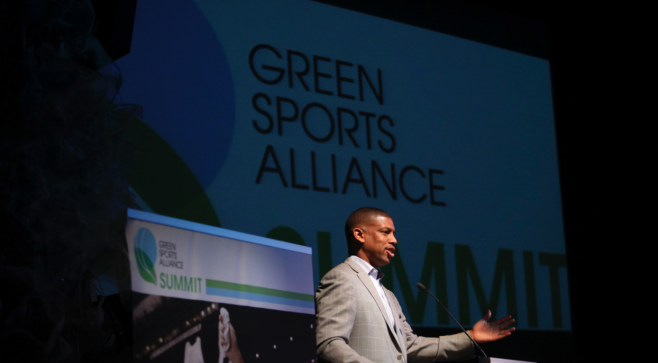
Retired NBA All Star and ex-Sacramento Mayor Kevin Johnson addressing the first Green Sports Alliance Summit in 2011 in Portland (Photo credit: Dabe Alan)
GSB: I went to the third Summit, in Brooklyn in 2013, and even more people came. And the rest, as they say, is history. What is your role as a board member?
Jason: I try to provide big-picture thinking and thought leadership on how to best grow the movement. We started with greening the games and the venues…
GSB: …What I call Green-Sports 1.0. I believe that’s the way it had to be. But we’re past the time to pivot to Green-Sports 2.0, engaging fans — with the important megaphone of the media — to change their environmental behaviors, including as it relates to climate change.
Jason: I agree. Even in those very early days, I would look across at CenturyLink Field and think, ‘for every Seahawks game, we have something like 10 percent of the entire population of Seattle in one room,’ which prompted me to ask, ‘How do we change the hearts and minds of billions of sports fans across the world and tell a new story of sustainability in our time?’
GSB: How is that going?
Jason: Nelson Mandela probably captured it best when he said
Sport has the power to change the world. It had the power to inspire. It has the power to unite people in a way that little else does. Sport can awaken hope where there was previously only despair.
Now think about channeling that power toward addressing climate change, the defining challenge of our time. We still have a lot of work to do to realize this dream, but the Green Sports Alliance and all of our partner organizations have this opportunity before us if we work together.
GSB: Those include GSA Japan, which launched earlier this year, BASIS in Great Britain, Sports Environment Alliance (SEA) in Australia and New Zealand, along with Sport and Sustainability International (SandSI) in Europe. Is this separation — some might say Balkanization — a good thing when the Green-Sports movement is relatively small?
Jason: Great question. I don’t see this as Balkanization at all. All these organizations are able to respond to their local cultures and contexts. I do see the ability for all of these groups, including Beyond Sport and others, to collaborate for maximum global impact through locally meaningful initiatives. In fact, that is one of the things I want to help foster as a GSA Board Member since I am now living and working in Australia. I am in conversation with a lot of the folks at these other incredible organizations, as many of us in the Alliance are. I think it is in all of our interests to work together, using the power of sports to ensure a safe and sustainable future for all life on our planet.
GSB: I’ll sign for that! What are you doing in Australia?
Jason: Staying true to my passion for cities, I set up Urban Apostles, my own development and consulting business. We specialize in regenerative urbanism and affordable housing models for cities. I like to say we work at the intersection of the sharing economy and art of city making.
GSB: What is regenerative urbanism?
Jason: Regenerative urbanism considers going beyond the ‘sustainable’ paradigm for cities since our current form of urbanization is not doing nearly enough to address issues like climate change and social inequity. For me, it’s a way of conceiving our cities as ‘living systems,’ and planning and developing them in a manner which creates conditions conducive for all life forms to thrive. Imagine a city that responds to the evolutionary needs of all the life within and around it. We look to shift from ‘human-centric’ urbanization models to ‘life-centric’ ones. Earlier this year, I also founded and launched City Makers’ Guild. It’s an education, advocacy, and research group promoting more equitable and inclusive cities.
GSB: Congratulations and good luck with both. And thank you for your important, visionary work that helped give birth to the Green Sports Alliance and is accelerating the move to Green-Sports 2.0.
^ Books on green design Twill read during his time at NYU included “Natural Capitalism,” by Amory & Hunter Lovins, with Paul Hawkens. “Ecological Design,” by Sym Van der Ryn and Stuart Cowan. “The Green Real Estate Development Guide,” by William Browning and the Rocky Mountain Institute
Please comment below!
Email us: lew@greensportsblog.com
Friend us on Facebook: http://facebook.com/greensportsblog
Tweet us @GreenSportsBlog
#CoverGreenSports
